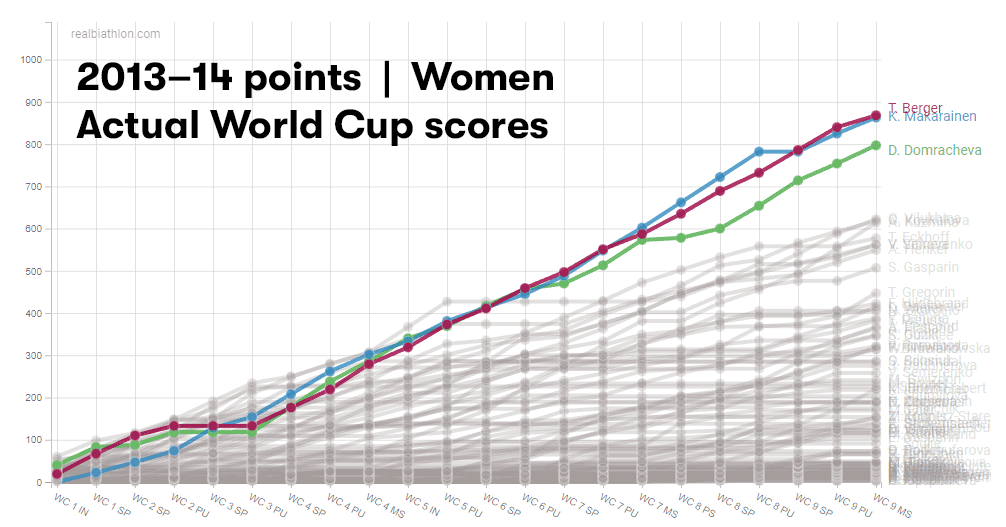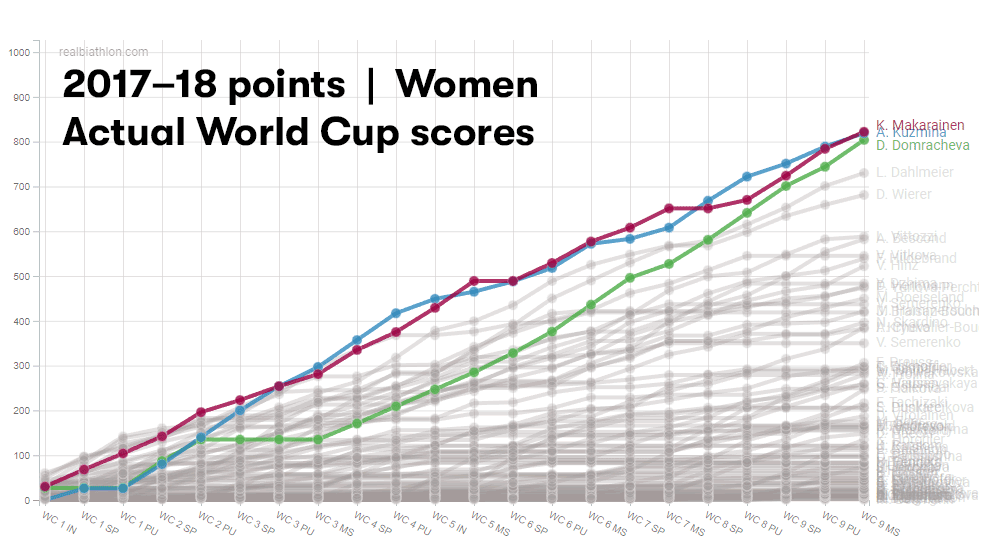The International Biathlon Union (IBU) introduced a new scoring system for the Biathlon World Cup from this winter onwards: world championships will no longer be included in the World Cup score, no more dropped results and a major adjustment in the points system to increase the value between top results.
It’s arguably the biggest season-to-season change in the history of the sport and not everyone is happy with it.
Old vs. new biathlon point system
| Rank | Scoring system from
2008–09 to 2021–22 | New scoring system from
2022–23 |
| 1 | 60 | 90 |
| 2 | 54 | 75 |
| 3 | 48 | 60 |
| 4 | 43 | 50 |
| 5 | 40 | 45 |
| 6 | 38 | 40 |
| 7-40 | unchanged | unchanged |
| (mostly) 2 dropped scores | no dropped scores |
| WCH races count | WCH no longer count |
The IBU points system has always been an outlier compared to pretty much any other scoring system in sports, especially other FIS winter sports, because it greatly undervalued top results. Some people are concerned seasons will be decided too early now, others don’t like the fact that consistency is no longer as important. The fact that no results can be dropped any more has also been criticized by some athletes.
The new biathlon points system is still less extreme than the FIS scoring system or Formula One for example. Interestingly enough, the IBU prize money distribution has always been more top heavy than their scoring system. Let’s take a closer look at how previous seasons would have turned out with the new system.
For last season’s Overall World Cup, the new point system would have had very little effect. The top 3 for both men and women would be unchanged if you apply the rules of the new scoring system. The only World Cup score that would have been flipped is the women’s Mass Start score, which was won by Justine Braisaz-Bouchet, but now would go to Elvira Öberg with the new points system.
Both big crystal globes were won rather decisively, so it is no surprise a different scoring system wouldn’t change the outcome. For last season, there wouldn’t have been much difference in when the title race was over either. Both winners would have been crowned just one race earlier (Quentin Fillon Maillet would have clinched the title in the Otepää sprint, instead of the mass start, Marte Olsbu Røiseland would have won the title three instead of two races before the end of the season).
Things get more interesting for 2019–20. Here both the men’s and the women’s overall winner comes out different. It also gets quite complicated, because aside from the mere points, there’s also dropped results and the difference in world champion races to account for.
For the men, the season actually ended like this: Johannes Thingnes Bø 913, Martin Fourcade 911. With the new system Fourcade would have won 1019 vs. 1001. However, if you still count the world championship results, the outcome flips again, and Bø comes out on top (1286 vs. 1014).
It gets even more extreme on the women’s side. The actual score was very close: Dorothea Wierer 793, Tiril Eckhoff 786. However, using this winter’s scoring system, Eckhoff would have won the title quite easily (956 vs. 737). Mostly because of Wierer’s very strong and Eckhoff’s horrible 2020 WCHs in Antholz; results which would now no longer be included. If you count the championship races, Eckhoff still comes out on top (1039 vs. 1028), but only by 11 points, thanks to her 7 wins that season compared to Wierer’s 4.
Since 2011, five (out of 24) Overall World Cup decisions would have been changed due to the new scoring system (2011: Bø vs. Svendsen, 2014 Berger vs. Mäkäräinen, 2018 Mäkäräinen vs. Kuzmina, plus both winners in 2020 as mentioned above).
It seems that even with the new scoring system, World Cup seasons that were close before will still be close even with the bigger point spread. And for seasons with runaway winners, which we had several on the men’s side during the last decade, the point system doesn’t matter all that much. The biggest change is probably the fact that from now on wins and podiums will be much more important that consistent top 10 results.


